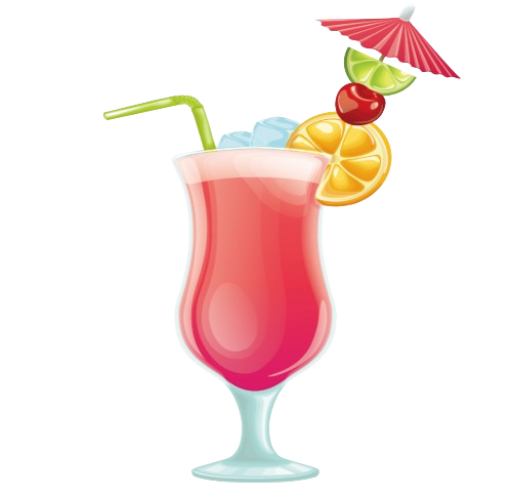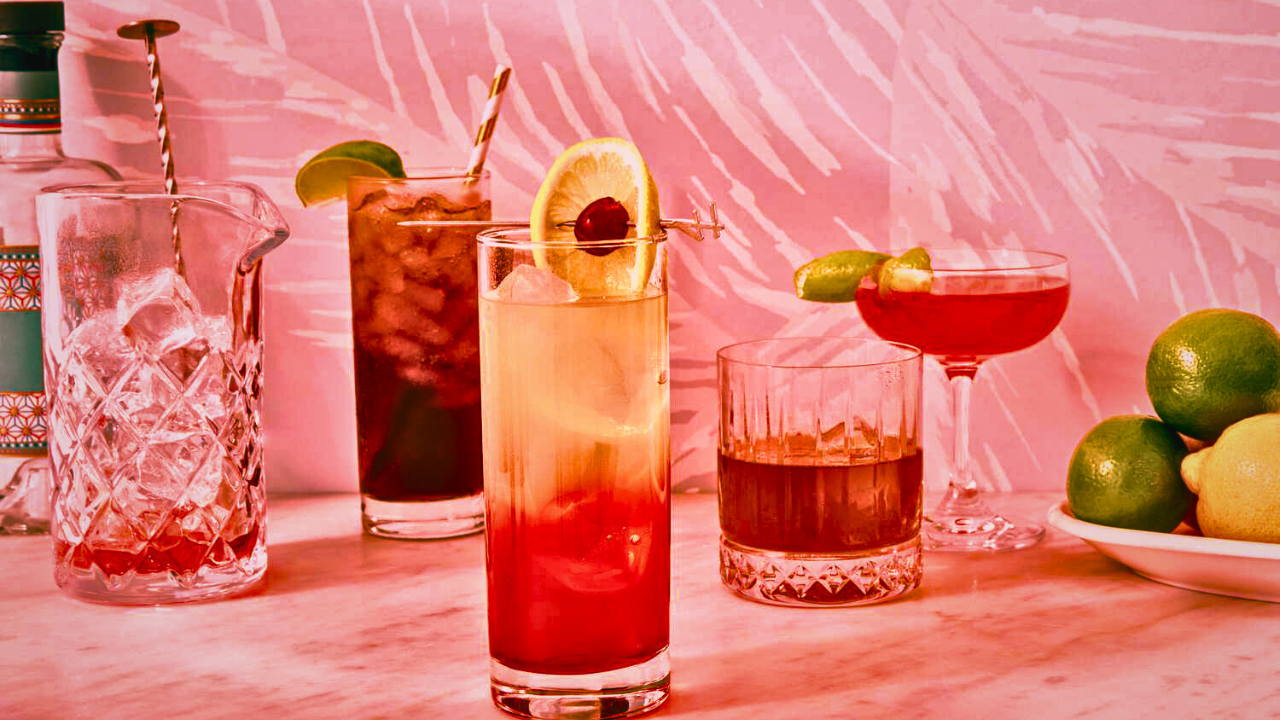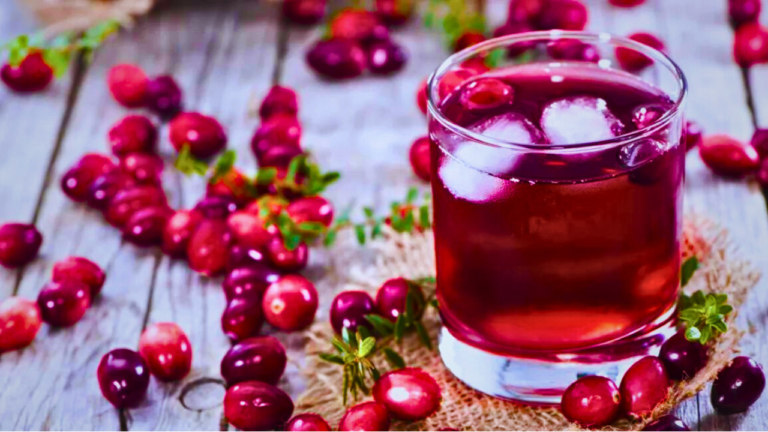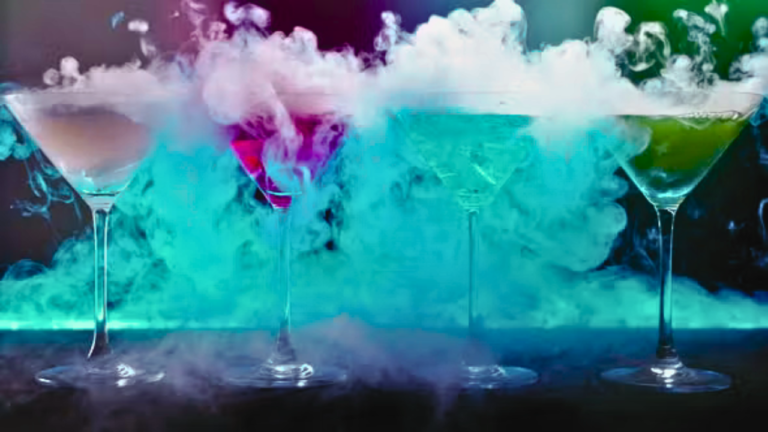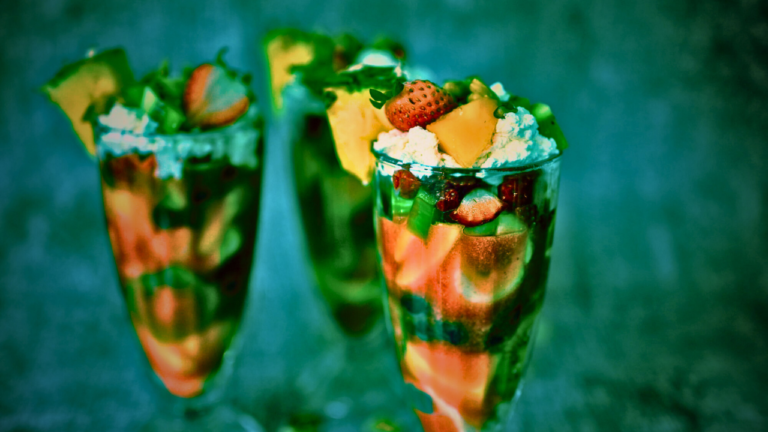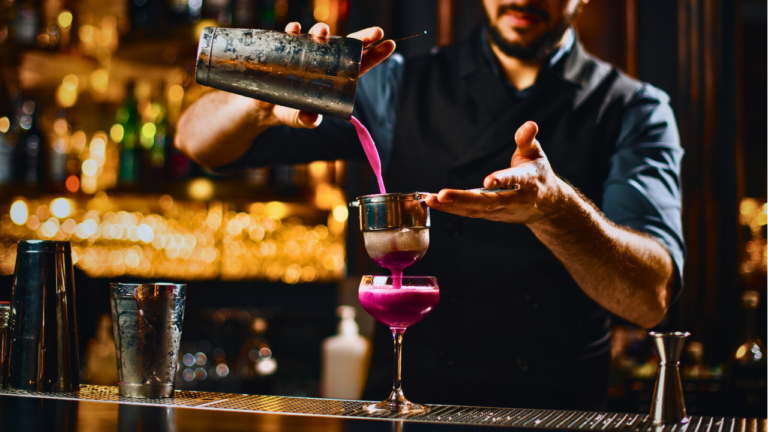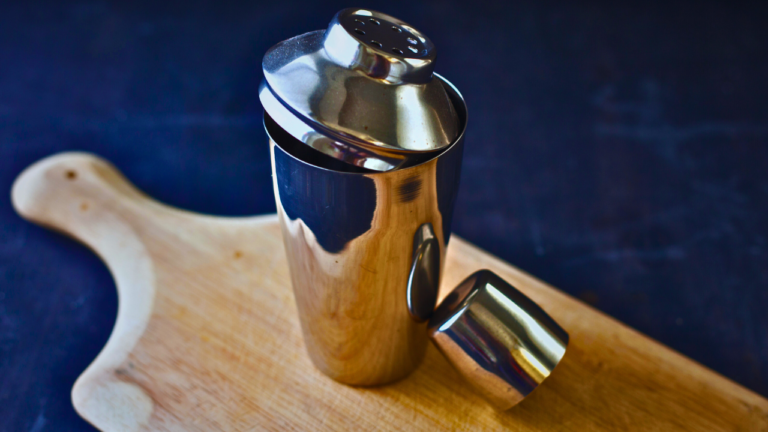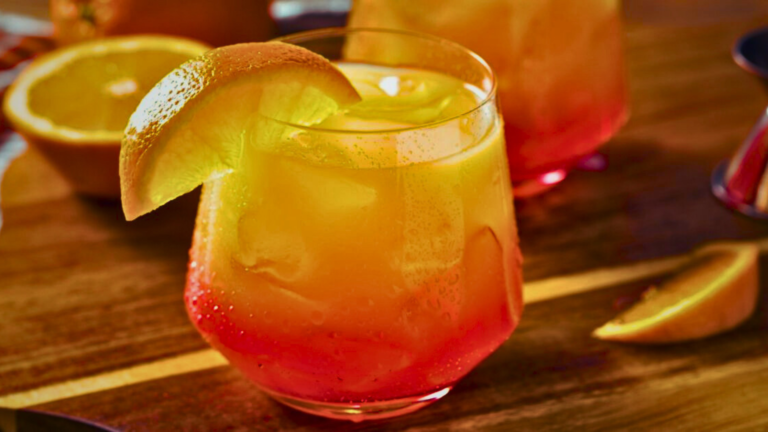How To Calculate Abv In Cocktails?
Nothing says celebration like a well-mixed cocktail. But as any mixologist knows, the perfect cocktail is much more than a blend of tasty ingredients—it’s a careful calculation. More specifically, it’s a calculation of alcohol by volume (ABV).
Knowing how to calculate ABV in cocktails allows you to understand their strength, helping you to drink responsibly and create perfectly balanced beverages. So, how exactly do you make this calculation? Let’s dive in!
“Knowledge of ABV calculation can be invaluable to cocktail enthusiasts and bartenders alike because it allows them to craft well-balanced and tasty beverages.”
Before we delve into the process, it’s important to grasp what exactly is meant by ‘Alcohol by Volume’ or ‘ABV’. ABV is a standard measure that’s used worldwide to quantify the amount of alcohol (ethanol) contained in an alcoholic beverage, expressed as a percentage of total volume.
- High-ABV Drinks: These include spirits like vodka, rum, and whiskey. They typically have an ABV ranging from 35% to 50%.
- Mid-ABV Drinks: This category encompasses fortified wines and liqueurs, which usually boast an ABV of around 15–25%.
- Low-ABV Drinks: Think beer and wine. They generally sit in the 4% to 14% ABV range.
Now that you have an understanding of what ABV is and how it varies across different beverages, we can move on to the main event: calculating ABV in your cocktails. Keep reading to master the science behind your favorite libations.
Read also: What Are Your Favorite Rum And Lemon Juice Cocktails?
What is the basic formula for calculating ABV in cocktails?
When it comes to calculating ABV, or alcohol by volume, in cocktails, a simple formula comes into play. It’s all about determining how much pure alcohol is in the mix. To put it simply, the basic ABV calculation involves the following steps:
- First, identify the ABV of every ingredient in your cocktail. This value is usually given in percentage and can be found on the label of every alcoholic product.
- Calculate the volume of each ingredient in the cocktail. Keep in mind that alcohol and other ingredients, such as syrups, juices, or mixers, may have different volumes.
- Multiply the volume of each ingredient by its ABV to find out how much alcohol each one contributes to the cocktail.
- Sum up the alcohol amounts of all the ingredients to get the total alcohol volume.
- Lastly, calculate the total volume of the cocktail by adding up the volume of all the ingredients.
- Divide the total amount of alcohol by the total volume of the cocktail and multiply by 100 to convert it into a percentage, and voila, you have the ABV of your cocktail!
It’s important to note that this basic formula provides an estimation of the ABV, but it doesn’t account for certain factors like the dilution caused by melted ice or variations in ingredient brands or types. However, it’s a handy tool for cocktail lovers and professionals alike to gauge the strength of their concoctions!
Here’s how the formula looks:
ABV = (Total Alcohol Volume / Total Cocktail Volume) x 100
Keep in mind that all measurements should be consistent since you’re dealing with a ratio. For example, if you measure alcohol volume in milliliters, then the volume of other ingredients and the total cocktail volume should also be in milliliters.
What factors influence the ABV of a cocktail?
When calculating the ABV of a cocktail, several factors come into play. Let’s take a closer look.
Proportions of Ingredients: The quantity and proportion of alcoholic and non-alcoholic ingredients used in a cocktail greatly influence the final ABV. A cocktail with more alcohol and fewer mixers will have a higher ABV, and vice versa. For instance, a martini made mostly with vodka or gin will have a higher ABV than a fruit punch made with more fruit juices and a smaller amount of liquor.
Type of Alcohol: The type of alcohol used also impacts the ABV. Spirits like vodka, rum, and whiskey usually have a higher ABV (around 40%) compared to liqueurs, beers, or wines. So, if your cocktail uses spirits as the key alcohol component, expect a higher ABV.
Method of Mixing: How you mix your cocktail can affect the ABV. Shaking or stirring a cocktail with ice can dilute the drink, which can lower the ABV. However, this effect can be minimal and often overlooked.
Evaporation: Alcohol can evaporate during the preparation of a cocktail, especially when heat is applied (for example, in making hot toddies). Evaporation can decrease the ABV slightly.
To wrap it up, cocktail ABV is all about the balance of elements. The precise quantities of alcohol and mixers, the type of alcohol used, the mixing method, and evaporation all contribute to the final alcohol content level. Knowledge of these factors, coupled with the basic formula for calculating ABV, can help with expected results. So next time you mix a cocktail, you’ll know exactly what’s in your glass!
What are the common misconceptions about ABV in cocktails?
You might believe you have a good grasp on the alcohol content (ABV) in your favorite drinks, but several common misconceptions can lead to misjudgments. Being knowledgeable about these fallacies will not only impress your friends during cocktail parties but can also aid in safer drinking habits.
The belief that darker spirits are stronger: The rich, dark color of spirits like bourbon often leads people to believe they contain more alcohol than their clear counterparts like vodka. However, color is not an accurate measure of ABV. A spirit’s color usually comes from aging in barrels, not its alcohol content.
The Myth of ‘Dilution Equals Low ABV’: It is a common fallacy that a heavily diluted drink or cocktail will have a lower ABV. The truth lies in the mathematics of alcohol volume. While the absolute amount of alcohol may not change, the dilution spreads it over a larger volume, reducing the concentration of alcohol but not the total alcohol present.
Misjudged Impact of Mixers: A cocktail’s non-alcoholic mixers can lead to confusion about ABV. Drinks with high sugar or fruit juice content can mask the taste of alcohol, leading people to believe they’re drinking less alcohol than they actually are. Even though mixers do not contribute to ABV, they can significantly impact your perceptions.
Experience bias: This misconception relies on personal tolerance for alcohol. Individuals who can drink large quantities without feeling the effects may falsely believe their drinks have a low ABV, which can lead to overconsumption.
Just remember that the best way to understand the ABV of your cocktail is not your subjective taste or the color of your spirit, but the mathematical calculation—and this can be a fun activity too, turning your cocktail-making into a delicious science experiment!
Read also: Where Does The Name Cocktails Come From?
How does the mixing process affect the ABV of a cocktail?
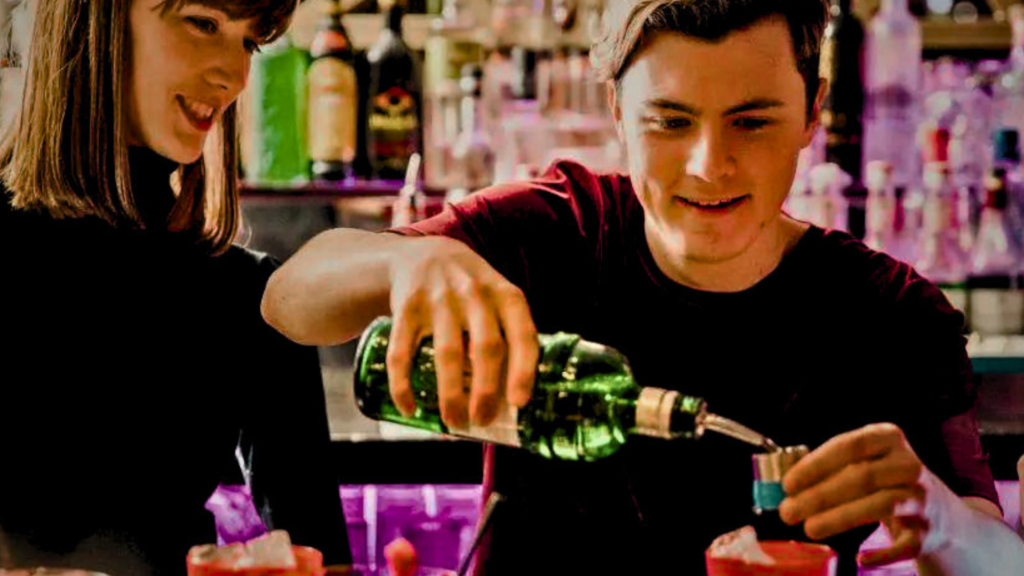
The mixing process of a cocktail is more than just a matter of blending flavors together. Believe it or not, it can significantly impact the final alcohol by volume (ABV) of your drink. Let’s dive into how and why this happens, so you can take it into account when creating your own concoctions.
The Dilution Factor
Dilution is a major factor that affects the ABV of a cocktail during the mixing process. Whenever you add non-alcoholic ingredients such as fruit juices, soda, syrups, or even the ice itself, you’re diluting the overall alcohol content. As these non-alcoholic elements mix with the alcohol, the volume of the cocktail increases, but the total amount of alcohol stays the same. Hence, the ABV decreases.
Blending High and Low ABV Ingredients
Often, cocktails are made with a mixture of high-ABV spirits and lower-ABV alcohols, like liqueurs or vermouths. When these are combined, they create a blend that results in an intermediate ABV. You should keep in mind that the ABV of the cocktail won’t be exactly the average of the ingredients’ ABVs, as it depends on the proportions of the ingredients used.
Temperature Impact
Finally, temperature also plays a role in the ABV of a cocktail. When you shake or stir a cocktail with ice, not only are you cooling down the drink, but you’re also melting some ice, which dilutes the cocktail and decreases its ABV. Also, chilling a drink can sometimes cause the perception of reduced strength, as colder temperatures may mask some of the alcohol’s burn.
So, in practice, even though the ABV of the ingredients may remain the same from bottle to glass, the process of mixing a cocktail—from diluting liquor with non-alcoholic ingredients, mixing spirits of various strengths, and playing with temperatures—can greatly impact the final ABV of a cocktail.
What are some practical examples of calculating ABV in popular cocktails?
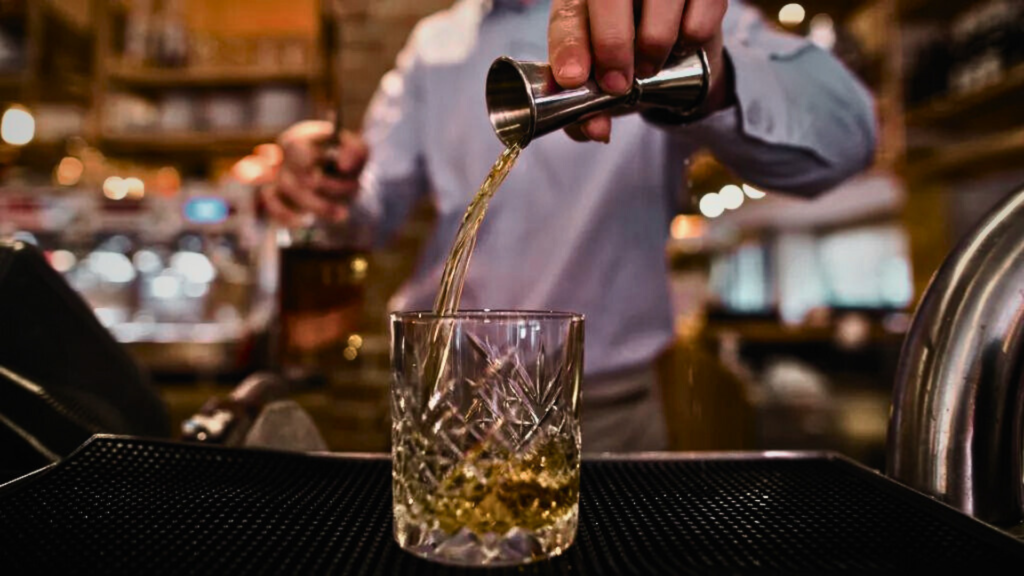
Great! Now that you have a basic understanding, let’s put these principles into practice. We’re going to break down a few popular cocktails and show you how to calculate their ABV. Please keep in mind that these calculations are generally accurate, but the actual ABV can still vary based on factors like the potency of your specific alcohol brands and the precision with which you measure your ingredients.
Mojito
For our first example, consider the classic mojito. This refreshing cocktail typically contains 2 ounces of rum, 1 ounce of lime juice, 2 teaspoons of sugar, and mint, topped off with soda water.
To calculate the ABV,
- First, let’s consider our only alcoholic component, the rum. If you’re using a standard rum with an ABV of 40%, then the volume of pure alcohol in the rum is 2 ounces * 40% = 0.8 ounces.
- You’ll then add the volume of non-alcoholic components (sugar, lime juice, and soda), which in this case totals about 5 ounces (this is a rough estimate and can vary).
- Finally, you compute the ABV of the entire drink by dividing the alcohol content by the total volume and then multiplying by 100. In this case, (0.8 ounces of alcohol / 7 ounces of total volume) * 100 = 11.42% ABV.
Margarita
Next we have the Margarita, a lip-smacking blend of 2 ounces of tequila, 1 ounce of lime juice, and 1 ounce of triple sec (an orange-flavored liqueur).
Here’s how you calculate the ABV:
- Again, start with your alcoholic components. If you’re using a standard tequila with an ABV of 40% and a triple sec with 30%, the volume of pure alcohol is (2 ounces * 40%) + (1 ounce * 30%) = 1.1 ounces.
- Then add the volume of non-alcoholic components (lime juice), which is 1 ounce.
- Finally, calculate the ABV of the entire drink: (1.1 ounces of alcohol per 4 ounces of total volume) * 100 = 27.5% ABV.
In each example, it’s important to remember that the ABV of a cocktail can change based on the exact recipe used, the different brands of alcohol, and the accuracy of your measurements. But this will give you a basic understanding and a starting point for calculating the ABV of cocktails yourself.
Read also: What’s The Difference Between Cranberry Juice And Cranberry Cocktails?
Conclusion
Understanding the alcohol content of your cocktails, denoted by ABV (alcohol by volume), is more than just knowing how strong your drink will be. It can also provide insight into flavor profiles and the overall balance of your cocktail. While the calculation may appear complex at first, with a bit of practice, you’ll soon be able to calculate ABV accurately.
Remember, your main goal in calculating ABV is to ensure that you’re creating a cocktail that’s both enjoyable and safe for consumption. Each element in your cocktail, from its spirit base to the dilution from mixers, plays a significant role in defining its ABV. Hence, adjusting proportions is a critical part of the equation.
Do you remember the misconceptions we discussed? Not all spirits have the same ABV, and adding ingredients doesn’t necessarily decrease the overall alcohol content. Mix wisely and consider the influence of each element. The process of mixing can also affect the final ABV, so never underestimate the power of a stir or shake!
With a handful of popular cocktail examples under your belt, you’re already on the way to becoming an ABV calculation guru. Applying these principles to your own cocktail creations could be the key to crafting your next masterpiece.
Happy calculating, and even happier tasting!
FAQs
Is the ABV the same for a given type of liquor, regardless of the brand?
No, it isn’t. The ABV can vary considerably from brand to brand, even for the same type of liquor. Always check the bottle packaging to confirm the accurate ABV.
Can non-alcoholic ingredients change the ABV of a cocktail?
Non-alcoholic ingredients can’t change the ABV as they don’t contain alcohol themselves. However, they do dilute the overall alcohol content, thus reducing the cocktail’s effective ABV.
Does adding more ice to my cocktail increase its ABV?
No, adding ice does not increase the ABV of your cocktail. Ice will dilute the drink as it melts, potentially lowering the ABV.
Is the ABV of a cocktail always lower than that of the individual alcohols used?
Yes, that’s generally the case. Non-alcoholic ingredients and dilution from ice lower the drink’s overall ABV compared to straight liquor.
Do shaken cocktails have a higher ABV than stirred cocktails?
Not necessarily. The mixing method—be it shaking or stirring—doesn’t affect the ABV as much as the proportion and type of alcohol used. Both methods dilute the drink, potentially lowering the ABV.
Does the order in which ingredients are added affect the ABV?
No, the order in which ingredients are mixed doesn’t directly alter the ABV. It’s the sum of the individual ingredient volumes and their respective ABVs that determines the final ABV of the cocktail.
Does the size of my glass impact the ABV of my cocktail?
No, the size of your glass won’t change the ABV. However, a larger glass could encourage the addition of more non-alcoholic mixers or ice, which could dilute the cocktail, thus lowering the effective ABV.
Which cocktails typically have a higher ABV?
Cocktails that are heavy on hard liquors, like martinis or negronis, generally have a higher ABV. Each specific cocktail’s ABV can be influenced by several factors, including the type and proportion of alcohol, mixer, and dilution used.
Does the type of mixer used in a cocktail affect its ABV?
No, the type of mixer itself doesn’t alter the ABV. However, mixers do dilute the cocktail, which will effectively lower the ABV. Plus, varying volumes of mixers can result in different volumes of the final cocktail, thus affecting the ABV.
How accurate is the basic formula for calculating ABV in cocktails?
The basic formula for calculating ABV provides a decent estimation. However, it doesn’t account for potential variances like dilution from ice melt or evaporation of alcohol, so it might not be 100% accurate.

Hello, friends! I’m Tom Elba, the driving force behind cocktailscape.com, your virtual hub for all things cocktails. If you have a passion for mixology or simply enjoy sipping on a well-crafted drink, then you’ve landed in the right place.
At Cocktailscape, I’m dedicated to sharing my love for the art of cocktail-making through tantalizing recipes, expert tips, and vibrant stories from the world of mixology. Whether you’re a seasoned bartender or an enthusiastic home cocktail enthusiast, there’s something here for everyone.
From classic concoctions like the Old Fashioned and the Martini to innovative twists and modern creations, I’m here to inspire you to shake, stir, and sip your way through a world of flavor.
But Cocktailscape is more than just recipes—it’s a celebration of culture, creativity, and community. I delve into the history behind iconic cocktails, explore emerging trends in the industry, and spotlight talented bartenders from around the globe.
So whether you’re looking to expand your cocktail repertoire, host the perfect soirée, or simply unwind with a refreshing drink after a long day, Cocktailscape has got you covered. Cheers to endless possibilities and unforgettable sips—let’s raise a glass together at cocktailscape.com!
